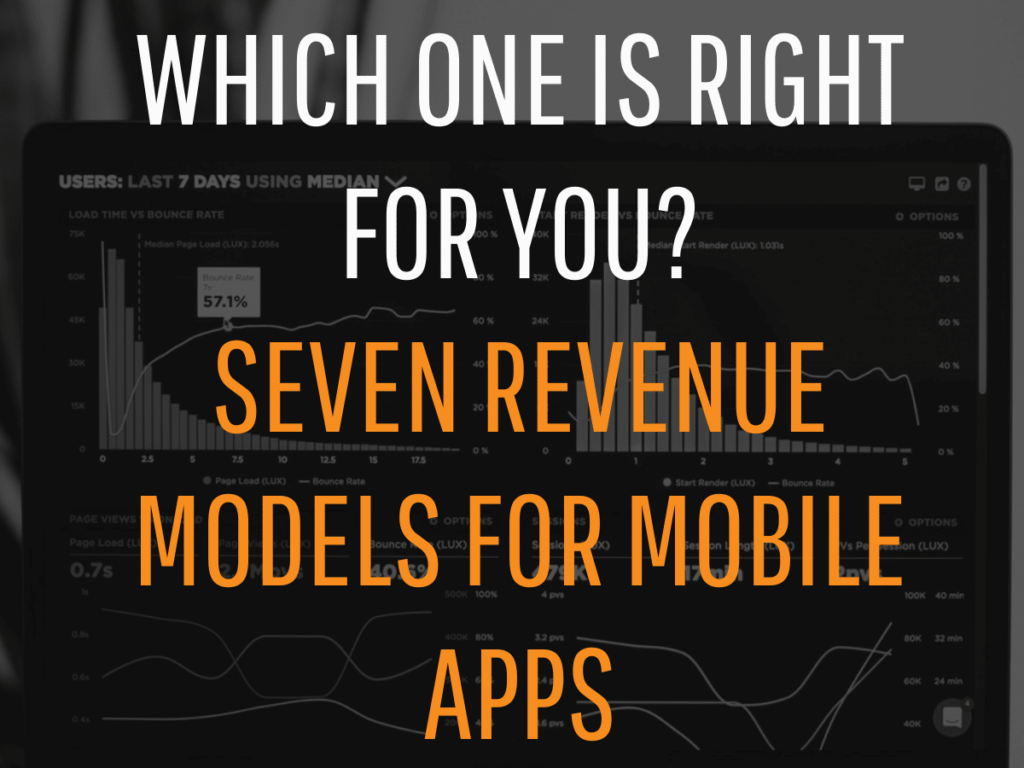Revenue Models for Mobile Apps
Over the last year, I’ve spent a lot of time on new app development for my clients. Specifically, how to launch, scale, and achieve sustainable profitability for a stand-alone mobile app.
Before I continue, let me clarify two things:
1) The is meant for an app that is a stand-alone product and not an extension of an existing business of any kind (brick & mortar, web-based retail, SaaS, etc.); and
2) The nature of the app does not already have a straightforward revenue model built-in (e.g., phone utilities, specialized information services, etc.).
With that in mind, let’s set the stage. The initial goal for most new stand-alone apps is to get as many users as possible as quickly as possible. I’m not going to focus on specific launch strategies and scaling tactics in this article, but let’s assume the goal is to get enough traction and a large enough user base that word-of-mouth will kick in and you can experience some organic growth (in addition to any paid efforts you’ve already employed).
But at some point in your growth, your board/investors will want to start seeing some returns. And assuming you are trying to build a business for an eventual exit of some sort, you will need to demonstrate an established income stream to be attractive to any suitor.
The question is: what’s the right revenue model for your app? For your UX? For your customer? And does it line up with your core values and mission?
To that end, here is a list of seven revenue models for mobile apps you might want to consider (and some of the things you’ll need to think about with each one).
#1 – CROWDSOURCING/FUNDRAISING: Utilizing Kickstarter or other crowdsourcing sites to generate revenue. Although helpful for initial funding, crowdsourcing and donations is probably not a sustainable, reliable income source for an ongoing business.
#2 – IN-APP ADVERTISING: In-App ads are pretty common and accepted by most users. If kept to a minimum and only relevant to the consumed content, it can be integrated with minimal disruption to the UX. But to do this well, you will either need to (1) hire a sales team or (2) sell your inventory in bulk to an aggregator or on the auction. The latter can lead to a complete loss of control on precisely who will be advertising on your app, so understand you may occasionally see ads for products/services that are not a good fit with your brand if you go this route.
#3 – SPONSORSHIPS: Allowing relevant third parties to “sponsor” sections of the app or types of content for a period (e.g., “Top Tips brought to you by …”). A well-integrated sponsorship can be a value-add to the consumer when the brand and content are relevant. However, the sales cycle for identifying and making deals with the right partners can be a bit longer than just selling ads – mainly if it involves a custom integration in the UX.
#4 – LEAD GENERATION: Using your platform to drive leads to relevant 3rd parties. Suppose you have a restaurant review app, for example. In that case, you could work with Open Table to drive leads to their site, or an app comparing marketing automation platforms might be reaching exactly the kind of users Adobe would love to contact. As long as this is transparent to the users, it’s not a bad option.
#5 – IN-APP PURCHASES: It is very popular in gaming. This allows users to make a one-time (or hopefully several times) purchase of something to enhance their experience. But it’s not just gaming: an in-app purchase might be a tailored 1-1 experience to give customers access to an expert of some kind (travel planning, fashion ideas, even investment advice). Remember that the app stores will take 15-30% of your in-app purchase revenue, so build that into your pricing assumptions.
#6 – SELLING/SUBSCRIPTIONS: Charging people a one-time or recurring fee to access the app. If you didn’t launch as a paid app, converting to a paid app from a free one will undoubtedly have disastrous consequences on your active user base — unless you add significant new value that didn’t exist previously. A better strategy is to create a “freemium” model, offering a base level of content for free but offering the ability to upgrade to a “VIP” version with access to enhanced benefits and services.
#7 – DATA MONETIZATION: Selling your users’ anonymized information (no PII) to research institutions, marketers, product owners, etc., about devices used, type of network, user location data, etc. Even though this is legal and the data is anonymized, selling data of any kind to a 3rd party give away proprietary information about your users that can be sold to your competitors.
In conclusion, remember that even if you aren’t going to be generating income from day one, you need to plan how and when you will introduce a revenue model. Depending on which direction(s) you want to go, you may need to build for that capability sooner than later.
And if you need help deciding between these options (or any other marketing strategy questions), drop me a line at [email protected].




